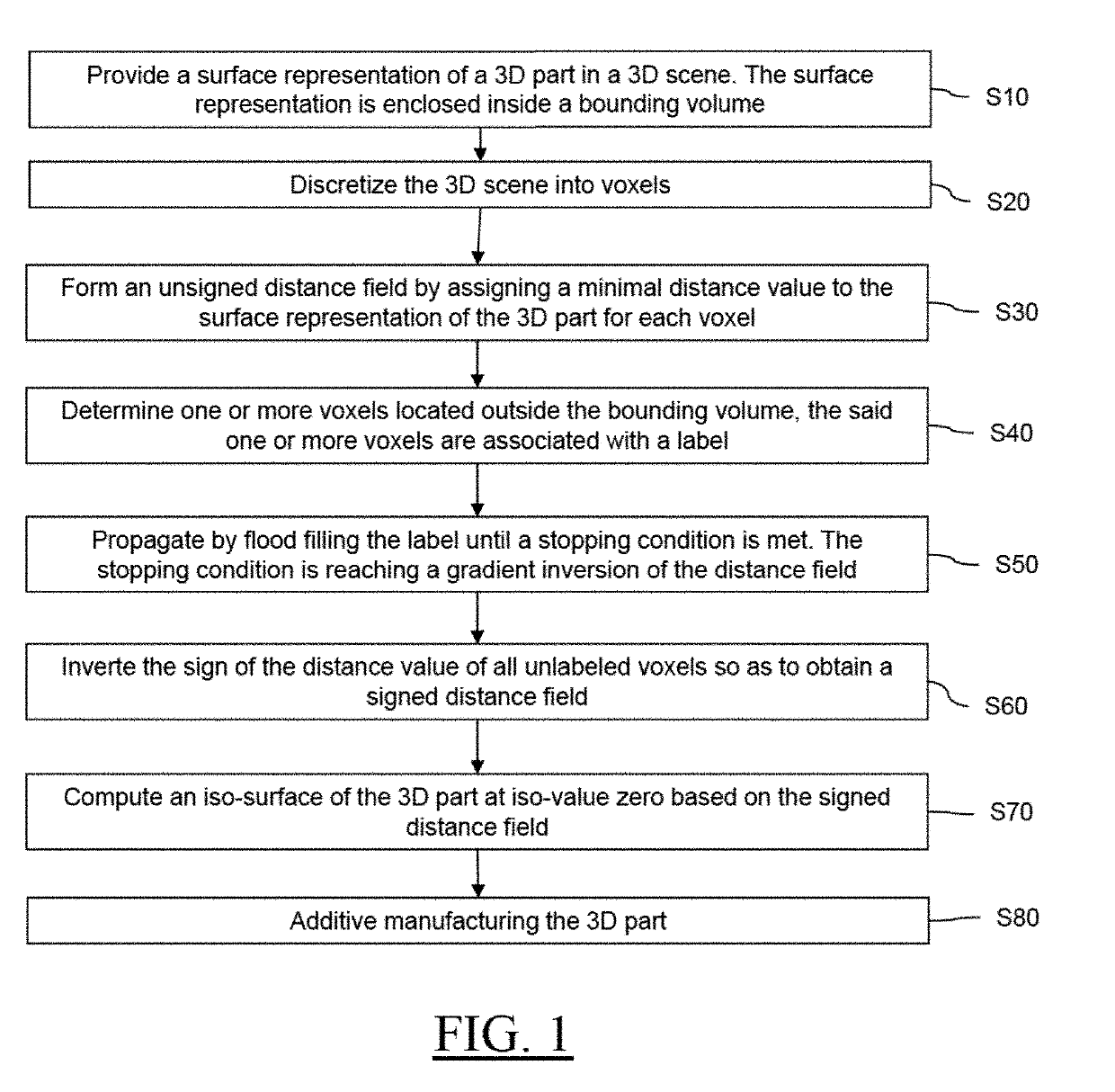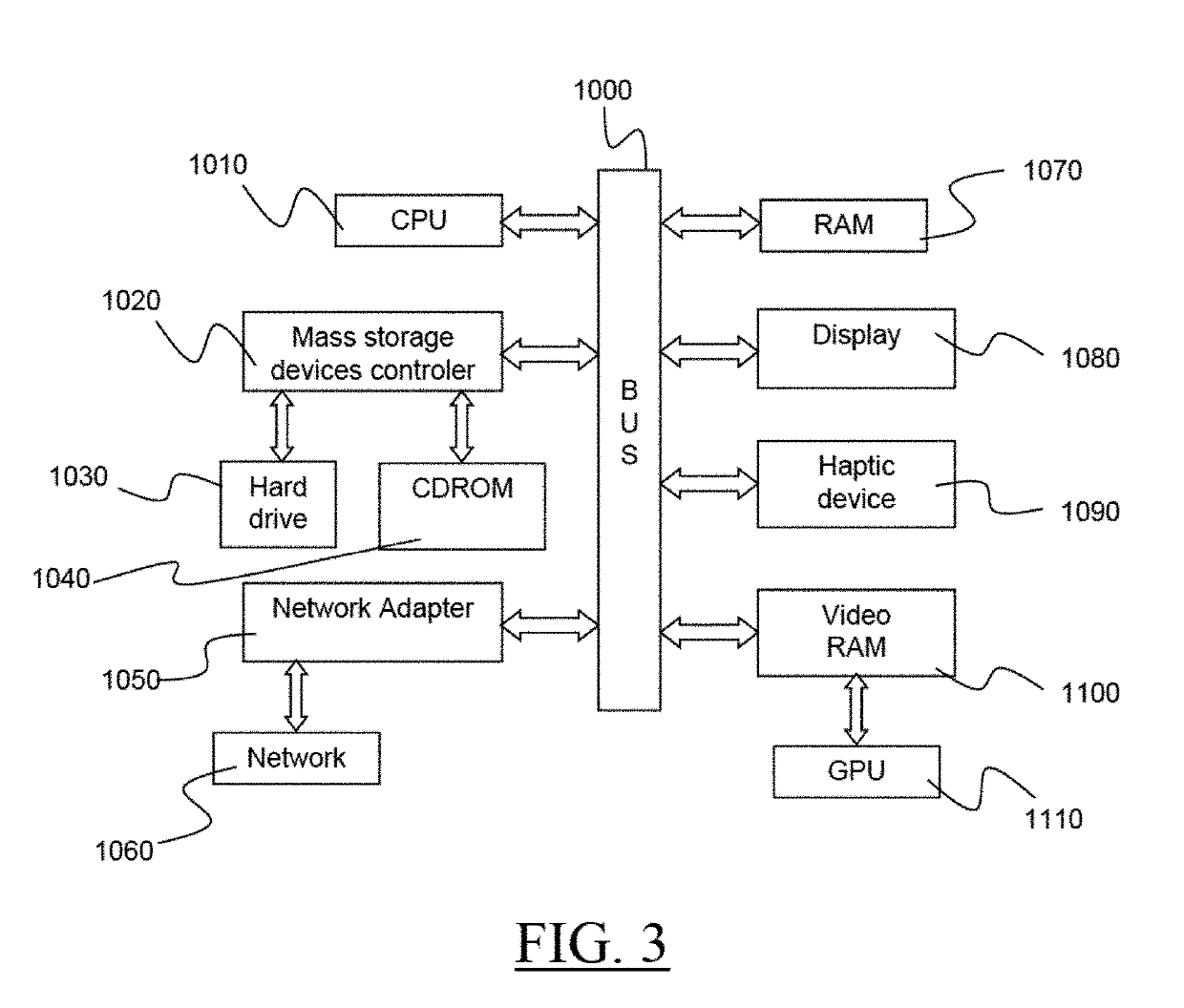Additive manufacturing of a 3D part
a 3d part and additive manufacturing technology, applied in the field of computer programs and systems, can solve the problems of ambiguous delimitations between regions, waste of raw materials used for building 3d objects, and inability of printers to correctly interpret data
- Summary
- Abstract
- Description
- Claims
- Application Information
AI Technical Summary
Benefits of technology
Problems solved by technology
Method used
Image
Examples
Embodiment Construction
[0034]With reference to the flowchart of FIG. 1, it is proposed a computer-implemented method of additive manufacturing of a three-dimensional (3D) part. The method comprises providing a surface representation of a 3D part in a 3D scene. The surface representation of the 3D part is enclosed inside a bounding volume (BB). The method further comprises discretizing the 3D scene into voxels. Then, an unsigned distance field is formed by storing a minimal distance value to the surface representation of the 3D part for each voxel. Next, one or more voxels located outside the bounding volume are determined or identified. The one or more voxels located outside the bounding volume are associated with a label. Next, the label is propagated by flood filling until a stopping condition is met. The stopping condition is reaching a gradient inversion of the unsigned distance field. Then, the sign of the distance value of all unlabelled voxels is inverted. As a result, a signed distance field is ob...
PUM
| Property | Measurement | Unit |
|---|---|---|
| distance | aaaaa | aaaaa |
| volume | aaaaa | aaaaa |
| bounding volume | aaaaa | aaaaa |
Abstract
Description
Claims
Application Information
 Login to View More
Login to View More - R&D
- Intellectual Property
- Life Sciences
- Materials
- Tech Scout
- Unparalleled Data Quality
- Higher Quality Content
- 60% Fewer Hallucinations
Browse by: Latest US Patents, China's latest patents, Technical Efficacy Thesaurus, Application Domain, Technology Topic, Popular Technical Reports.
© 2025 PatSnap. All rights reserved.Legal|Privacy policy|Modern Slavery Act Transparency Statement|Sitemap|About US| Contact US: help@patsnap.com



